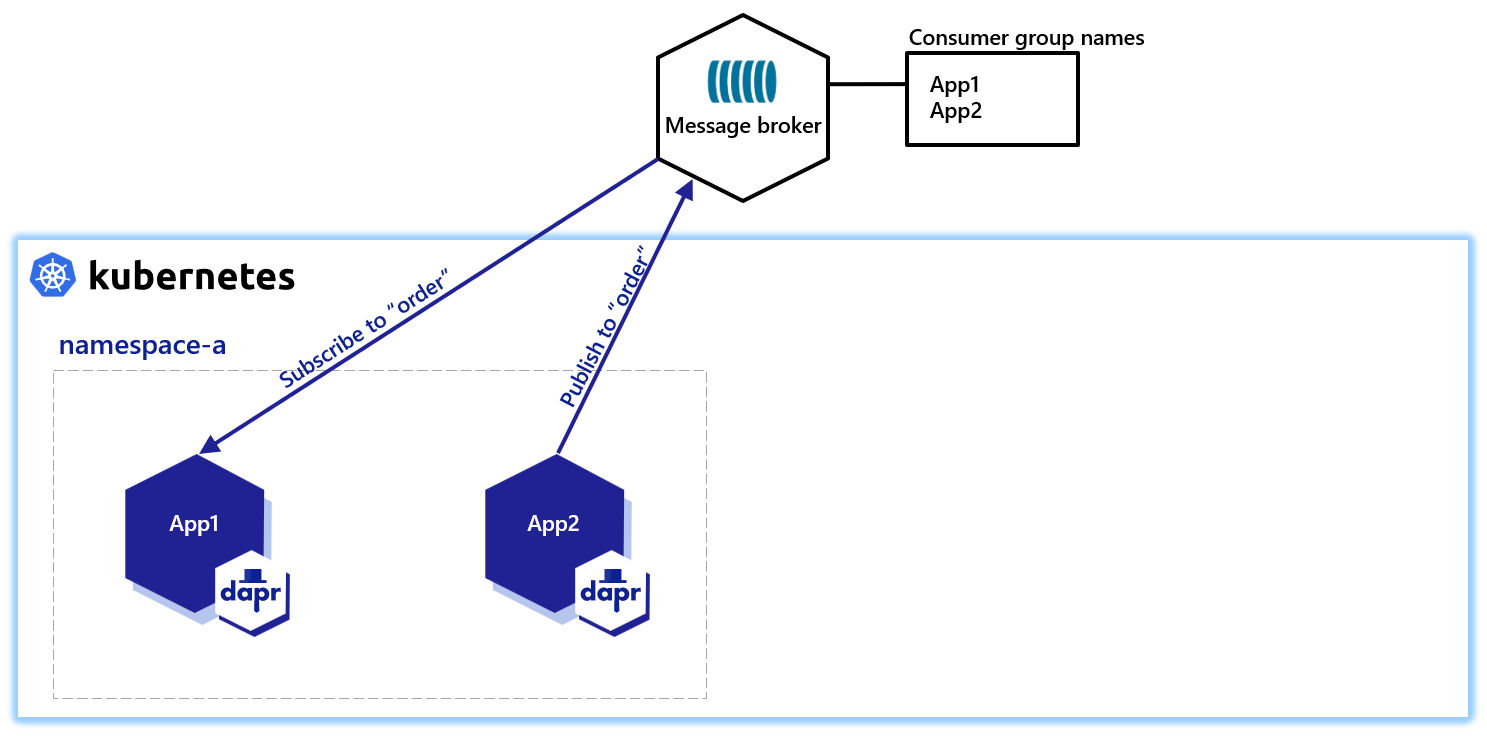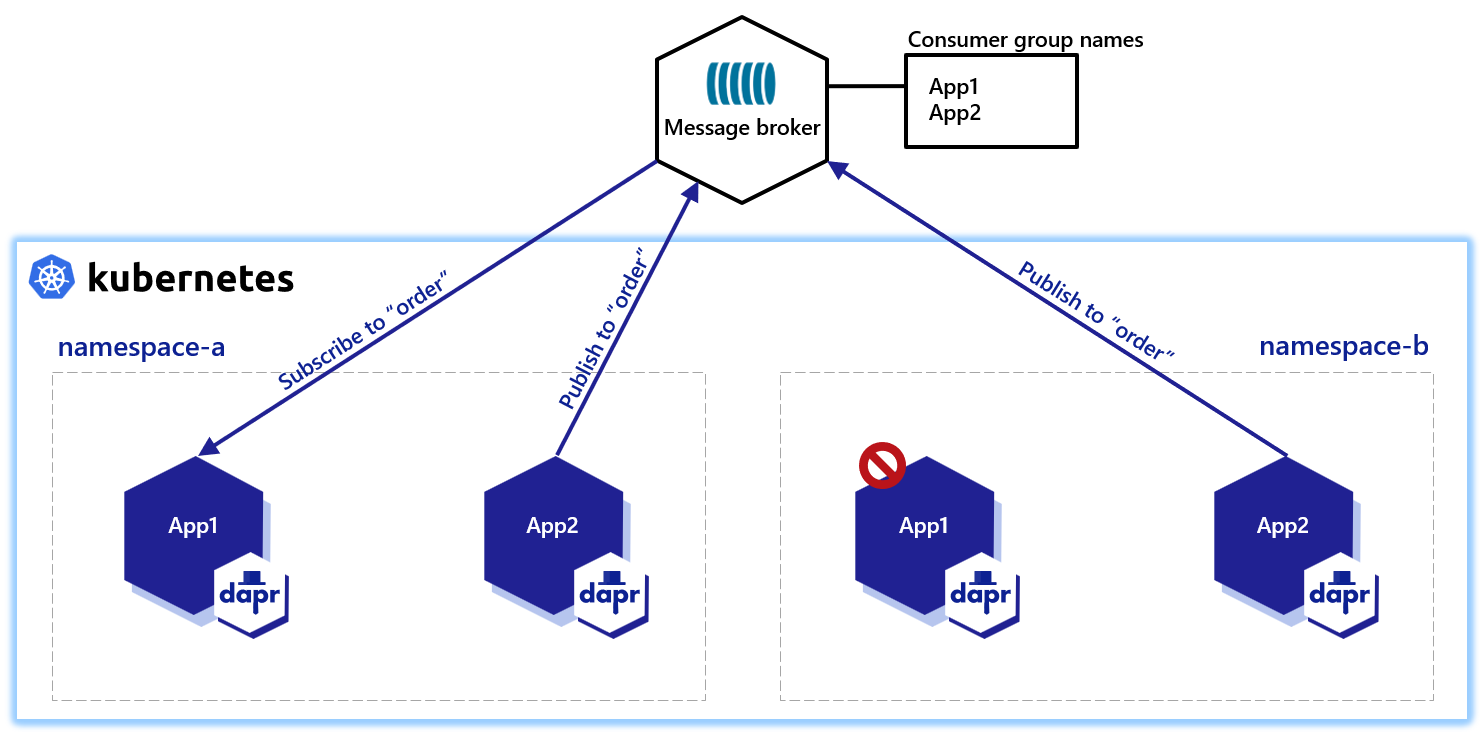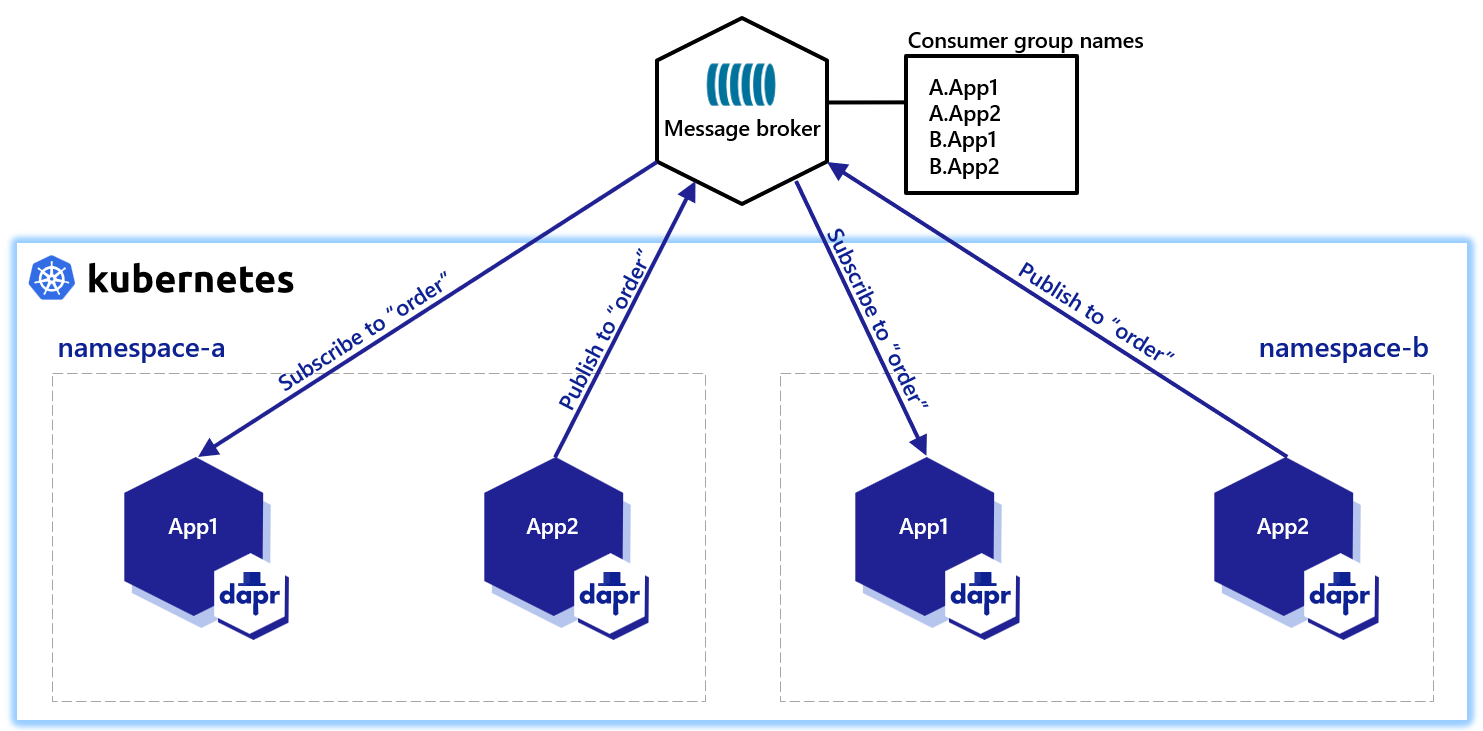The documentation you are viewing is for Dapr v1.9 which is an older version of Dapr. For up-to-date documentation, see the latest version.
How to: Set up pub/sub namespace consumer groups
You’ve set up Dapr’s pub/sub API building block, and your applications are publishing and subscribing to topics smoothly, using a centralized message broker. What if you’d like to perform simple A/B testing, blue/green deployments, or even canary deployments for your applications? Even with using Dapr, this can prove difficult.
Dapr solves multi-tenancy at-scale with its pub/sub namespace consumer groups construct.
Without namespace consumer groups
Let’s say you have a Kubernetes cluster, with two applications (App1 and App2) deployed to the same namespace (namespace-a). App2 publishes to a topic called order, while App1 subscribes to the topic called order. This will create two consumer groups, named after your applications (App1 and App2).

In order to perform simple testing and deployments while using a centralized message broker, you create another namespace with two applications of the same app-id, App1 and App2.
Dapr creates consumer groups using the app-id of individual applications, so the consumer group names will remain App1 and App2.

To avoid this, you’d then need to have something “creep” into your code to change the app-id, depending on the namespace on which you’re running. This workaround is cumbersome and a significant painpoint.
With namespace consumer groups
Not only can Dapr allow you to change the behavior of a consumer group with a consumerID for your UUID and pod names, Dapr also provides a namespace construct that lives in the pub/sub component metadata. For example, using Redis as your message broker:
apiVersion: dapr.io/v1alpha1
kind: Component
metadata:
name: pubsub
spec:
type: pubsub.redis
version: v1
metadata:
- name: redisHost
value: localhost:6379
- name: redisPassword
value: ""
- name: consumerID
value: "{namespace}"
By configuring consumerID with the {namespace} value, you’ll be able to use the same app-id with the same topics from different namespaces.

In the diagram above, you have two namespaces, each with applications of the same app-id, publishing and subscribing to the same centralized message broker orders. This time, however, Dapr has created consumer group names prefixed with the namespace in which they’re running.
Without you needing to change your code/app-id, the namespace consumer group allows you to:
- Add more namespaces
- Keep the same topics
- Keep the same
app-idacross namespaces - Have your entire deployment pipeline remain intact
Simply include the "{namespace}" consumer group construct in your component metadata. You don’t need to encode the namespace in the metadata. Dapr understands the namespace it is running in and completes the namespace value for you, like a dynamic metadata value injected by the runtime.
Note
If you add the namespace consumer group to your metadata afterwards, Dapr updates everything for you. This means that you can add namespace metadata value to existing pub/sub deployments.Demo
Watch this video for an overview on pub/sub multi-tenancy:
Next steps
- Learn more about configuring Pub/Sub components with multiple namespaces pub/sub namespaces.
Feedback
Was this page helpful?
Glad to hear it! Please tell us how we can improve.
Sorry to hear that. Please tell us how we can improve.